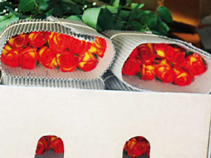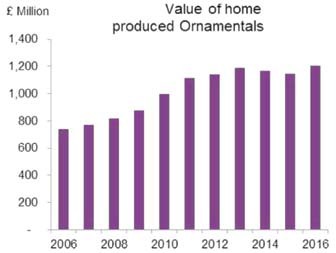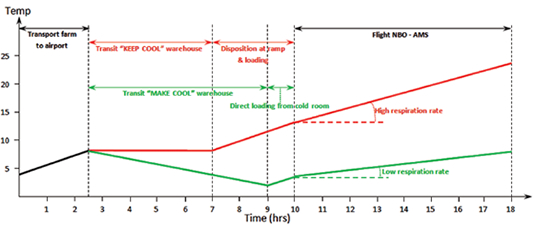 Q : For export, Flowers must be packed. Kindly discuss the importance of quality cartons in packaging of flowers?
Q : For export, Flowers must be packed. Kindly discuss the importance of quality cartons in packaging of flowers?
A: The quality of a carton is important as it determines the state in which the produce will reach the market. A good quality box should be able to withstand the harsh conditions in the supply (cool) chain. The primary purpose of a carton is to protect, preserve and ship the produce to the market in top quality sustainably- in as near perfect condition as possible-allowing for good returns.
It is pointless to put so much effort in getting a quality produce from the farm only for it to arrive in bad state in the target market due to poor quality packaging fetching low returns and being subject of claims etc.
Q: For a layman, a carton is a carton; briefly discuss factors to consider when choosing the best carton for flowers?
A: A box is a box to a layman however you could have two boxes constructed of the same quality material (paper from same sources) but the resulting box could be very different in terms of capability- or ability to perform in the hostile conditions that it is subjected to.

 The second edition of the Flower Logistics Africa (FLA) and Perishable Logistics Africa (PLA) was held on the 22nd and 23rd November consecutively at the Radisson Blu Hotel in Nairobi. The event was organised by various stakeholders and went on successfully for the two days. The occasion brought together key industry players including growers, exporters, freight forwarders, the airlines etc.
The second edition of the Flower Logistics Africa (FLA) and Perishable Logistics Africa (PLA) was held on the 22nd and 23rd November consecutively at the Radisson Blu Hotel in Nairobi. The event was organised by various stakeholders and went on successfully for the two days. The occasion brought together key industry players including growers, exporters, freight forwarders, the airlines etc.
 Since 2016, Selecta one supplies Fairtrade certified young plants to their poinsettia growers besides conventional ones. All poinsettias are sourced from Wagagai Ltd. in Uganda. Besides improving health and safety measures, enabling freedom of association and collective bargaining the employees benefit from a Fairtrade Premium, which can be used for social projects. Already in 2016, Selecta generated through their poinsettia sourcing at Wagagai a return of 8,000 Euro to local workers as a premium. Independently from this Selecta and Wagagai are fulfilling all environmental and social standards set by Fairtrade to meet the certification requirements.
Since 2016, Selecta one supplies Fairtrade certified young plants to their poinsettia growers besides conventional ones. All poinsettias are sourced from Wagagai Ltd. in Uganda. Besides improving health and safety measures, enabling freedom of association and collective bargaining the employees benefit from a Fairtrade Premium, which can be used for social projects. Already in 2016, Selecta generated through their poinsettia sourcing at Wagagai a return of 8,000 Euro to local workers as a premium. Independently from this Selecta and Wagagai are fulfilling all environmental and social standards set by Fairtrade to meet the certification requirements. Description
Description Although a scientific approach of post harvest technology for fruits, vegetables and flowers goes back to the 1970’s, many partners in the logistic chain still lack awareness and knowledge of basic principles. All efforts that the producer has made to reach top quality products may be lost within 24 hours by mismanagement of the cold chain. The small gain made by saving on the cold chain is negligible compared to the loss of value it will cause. Proper cold chain management from farm till buyer is an essential condition for the preservation of the quality and the value of a perishable product.
Although a scientific approach of post harvest technology for fruits, vegetables and flowers goes back to the 1970’s, many partners in the logistic chain still lack awareness and knowledge of basic principles. All efforts that the producer has made to reach top quality products may be lost within 24 hours by mismanagement of the cold chain. The small gain made by saving on the cold chain is negligible compared to the loss of value it will cause. Proper cold chain management from farm till buyer is an essential condition for the preservation of the quality and the value of a perishable product.